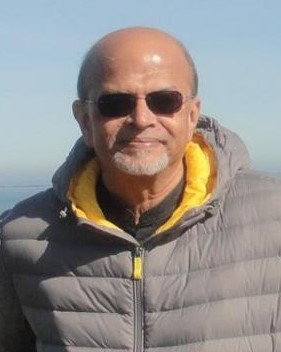Let me start with a confession. It is different strokes for different folks, including in team design.
While I have worked both as a client and as communications partner all my working life, I will not advocate any one team design. In a sense, it is horses for courses. And there is constant evolution.
In one of my first roles as head of corporate communications in a highly diversified group, there were just 2 of us – 1 in Kolkata and myself in Mumbai. We were the entire communications team!
I clearly recall taking flight after flight to the different places where group companies were headquartered. Mumbai, of course, but there were also cities like Delhi, Kochi, Chennai, and Kolkata to name but a few.
While the focus of the business group was on centralised messaging, and group internal communications, I had to make plan after plan for each of the individual companies, who neither had a communications team not a communications partner. Naturally, that was a model which was destined not to work. And that is what happened☹.
Subsequently, in my days at India’s most respected business groups, it was the opposite.
Here, every group company had a communications team as well as external communications partners. Further, each company was empowered to appoint their own partners, given that their business goals were different.
At the apex level, there was a group communications head, but the role was more of facilitating and ensuring that broad group messages were also a part of every individual company’s message dashboard. This model had multiple advantages and, in my view, worked very well. The group level person would also host a get together of all the communications heads and their partners every quarter, so that everyone was on the same page.
The next organisation I worked for had different business lines but was one company, and the model here was very different.
At this firm, the role encompassed both marketing and communications and included PR, internal communications, investor communications, brand communications, and research.
The team, which I led, was an integrated unit but we had different resources embedded in the business lines – be it consulting, IT outsourcing or BPO.
The biggest advantage of this model was that the marcom team was one team, not to mention that the India marcom lead had complete oversight over everything to do with all aspects of communications.
The only possible drawback was that most of the messaging used to come from global headquarters. But that too, was soon rectified, and we ran a country specific advertising campaign as indeed a PR program anchored in regional media. As far as external partners went, we had the same ones for design, PR, direct marketing, internal communications, and advertising across the firm, irrespective of the business division being serviced. This resulted in a huge amount of consistency of messaging, which should be the cornerstone of any communication program.
The retail group I then worked with had a similar model. We were a core team of communications professionals, which ensured that messaging for different companies was aligned at a corporate level. Messaging for individual companies was necessarily different, as it ought to be. The only difference here was that brand marketing was not a part of our mandate. So constant interactions with the different brand teams became extremely important. It was a process we put into place, and it worked like a dream.
The most challenging model I have seen was during my days at India’s largest PR consultancy. It was a model where all that had worked in the examples above was almost thrown to the wind. The client was one of India’s most respected business groups with interests in multiple sectors.
On our side, we wanted to put our best foot forward. So, the SBU best suited to delivering the required outcomes for a business, was asked to oversee that part of the client’s business. As an example, at our end, the SBU with the most experience in handling real estate was given the mandate of handling the client’s property business. Similarly, the SBU at our end most suited to delivering FMCG solutions was allocated the client’s FMCG business. The net result was that there was a lot of confusion, as you may well visualise. And it was not too difficult to see what was happening.
Each of our team members were effectively working on the same client, but different businesses. From a team perspective, many of our team members belonged to different SBU’s with their own business targets and so on. They also had different SBU bosses, who once again, had different priorities. And the part of the business allocated to each SBU was not very large, although the client was paying us a very decent retainer fee overall.
What made matters worse was that on the client side, they were one team, embedded in the different businesses, like the one I described earlier. We had a situation with multiple teams from our side, one team from the client side, and no one from our side to oversee the entire mandate. Yes, there was no one person who could deal on a one-on-one basis with the one client who headed the function at the client side.
Little wonder that he was hopping mad.
That was when I was pulled in to oversee the entire mandate.
‘Atul, your only job is to bring all the teams at your end together. I cannot spend every day with different teams from your side coming to us with only their part of the business,’ is what the client told me the day I took over.
Believe me, trying to align the different SBU’s at our end to the client business was like walking a tightrope. Fortunately, the balancing pole worked well, and nothing untoward happened. Sure, there were the usual differences of opinion, but with the introduction of a few processes, things began to function a lot smoother.
One day, when things were on relatively stable ground, I was having lunch with the client when he asked, ‘How do you manage to do this balancing act?’.
I replied in one word.
‘Experience’.
And that was the real reason. In the past, handling our telecom client pan India involved working effectively with 22 clients with 22 teams of people. And we had pulled that off very well. If I had not got a hang of doing it before, I would have failed with this client for sure.
I don’t know what conclusions you can draw from the above team designs that I have written about, but here are a few thoughts….
PostScript
- Alignment. As a communications partner, unless you align your team to the client’s business so that working seamlessly is possible, you are fighting a lost cause.
- As a client, you must align your team to meet the overall business goals.
- There are no hard and fast rules as far as team sizes go. However, do make sure that all requirements are covered by the skill sets that your teams possess.
- The bar is being raised every day, so make sure that you are hiring those who will be able to handle every eventuality with the right skills and attitude.
- There will be some failures. Learn to adapt and make changes when required. But make changes in a humane and considerate way. People must be respected.
The views and opinions published here belong to the author and do not necessarily reflect the views and opinions of the publisher.



Interesting Atul